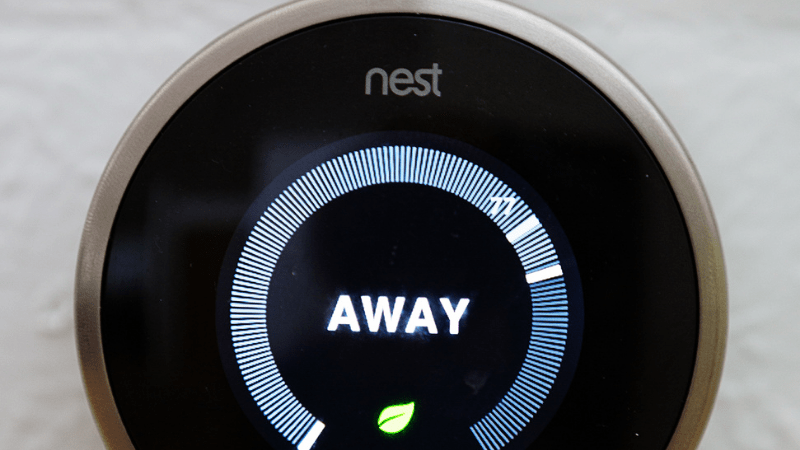Nest Thermostat vs. Honeywell T9: Which is Better?
When you buy through our links, we may earn an affiliate commission.
Both the Honeywell T9 and the Nest Learning thermostat have taken drastically different approaches to their smart home conventions and how they function in relation to your needs. The Nest requires strategic placement, while the T9 takes advantage of sensors.
In terms of aesthetics, smart home innovations, installation, and ease-of-use, the Nest Learning Thermostat is the clear winner, and it does all of that with no touch interface.
However, this doesn’t mean that the Honeywell T9 isn’t worth your time or investment. Read on to learn more about how both devices stack up against one another.
Nest Thermostat vs. Honeywell T9 Thermostat
Both thermostats are what we would term “smart thermostats” in that they interact with you, a virtual assistant, your Wi-Fi, and other smart devices within your home. Both are also learning thermostats, adjusting as your days unfold to better match your routines.
| Nest 3rd Gen Learning Thermostat | Honeywell T9 Thermostat | |
| Price | $244.00 | $149.99 |
| Installation | Simple and needs a Wi-Fi connection | Simple, with more complicated steps afterward |
| Compatibility | Google Assistant and Alexa | Alexa, Google Assistant, Cortana, and IFTTT |
| Touch Screen | No | Yes |
| Heating Stages | 3 | 2 |
| Sensors | No | Yes |
| Battery | Lithium-ion | Alkaline |
| C-Wire Required | No | Yes |
Aesthetics and Ease-Of-Use
The Nest Learning Thermostat gets all of the accolades here. Its rounded, glossy surface looks as if it is made of some metallic glass. They come in several different color varieties, and it has a high-definition display that’s eye-catching when you walk by. The Honeywell T9 sticks with what it knows best: an all-white exterior and a decent display that changes colors to match the surrounding environment.
Both thermostats work very well, with the T9’s advantage coming from a full touchscreen control at the thermostat. The Nest lacks the touch controls but has a far more streamlined and intuitive app.
The Nest is designed to detect and adjust to its local environment, stretching out a fair distance. The Honeywell T9, on the other hand, utilizes sensors at a range of up to 200’ to control the temperature for individual room comfort. That’s why the placement of the Nest is important as the areas of the home you spend the most time in is the area it needs to be.
Our verdict: The Nest loses ground with its determination that you purchase multiple thermostats or smart blowers in your extra rooms to extend its range of adjustment. However, The Honeywell T9 just doesn’t have that intuitive touch when it comes to a properly streamlined app.
Compatibility and Price
Here’s where the Honeywell T9 shines, and the Nest Learning Thermostat falters. The Honeywell T9 is compatible with more virtual assistants than the Nest, including Windows 10’s Cortana. It’s also more reasonably priced at $100 lower than the Nest.
Though both have geofencing features, the Honeywell uses IFTTT, which is designed for geofencing with nearly every command and react option possible for a smart thermostat.
With a much more reasonable price-point and integration with more virtual assistants—especially including IFTTT—the Honeywell T9 just gives you more options to play with than the Nest.
Our verdict: So much revolves around the choice of virtual assistants and the apps we use to streamline our smart homes, making our lives more convenient. The T9 caters to this more than the Nest.
Installation and Operation
The Nest Learning Thermostat doesn’t require a C-Wire, drawing power from the leftover from the other wires to help it communicate with the Wi-Fi. The Honeywell T9, on the other hand, does require a C-wire to operate.
It also has Eco Mode which helps you save money by lowering the use. It can be frustrating though as sometimes it turns on when you’re still home which has driven people to disable Eco Mode entirely.
However, both thermostats have a large suite of installation instructions to cover you for every eventuality. In the end, the Nest is much easier to install and operate.
The Honeywell T9 requires you to go to their website after you have properly installed the thermostat and sign up and input your Honeywell MAC address and register your thermostat. Only after that is completed can you start using the app and operating your thermostat normally. The Nest Learning Thermostat doesn’t require any of that. As soon as your thermostat is connected to your Wi-Fi, you’re ready to go.
Our verdict: Both thermostats allow you to control them from anywhere you choose. However, the Nest app is more streamlined and comfortable to use when accessing your thermostat away from home. Being much easier to install and having a more streamlined app gives the Nest the overall edge in this category.
Final Thoughts
The Nest Learning Thermostat is the better thermostat between the two. With a more streamlined app, ease-of-use, and more advanced features, it’s hard to beat. The Honeywell T9 is not without its own set of excellent features, however.
The T9 is still a great choice for a smart thermostat as it also learns and adjusts to your daily behavior, has a decent app, and is more compatible with different virtual assistants, giving you a wider array of choices.

